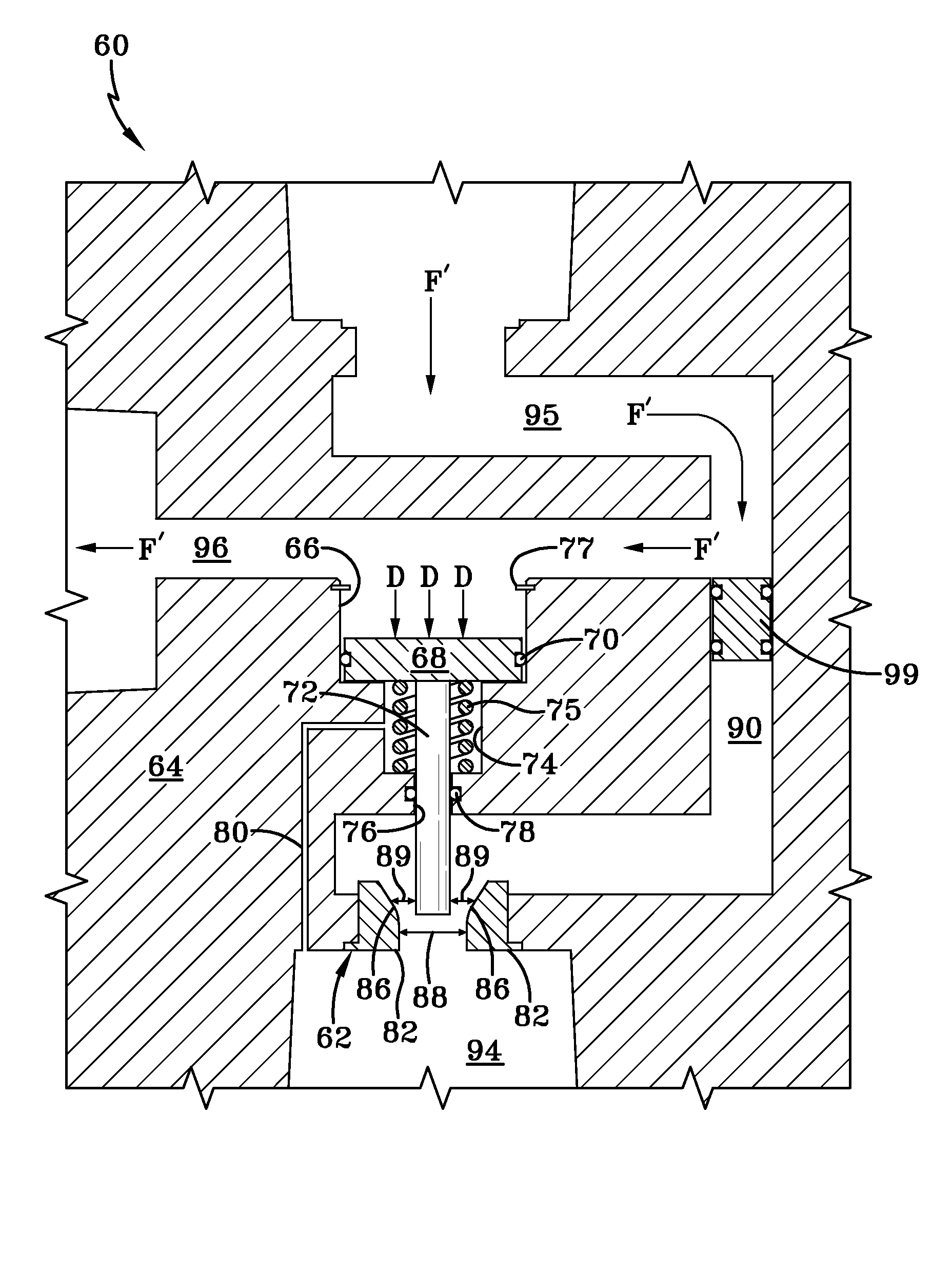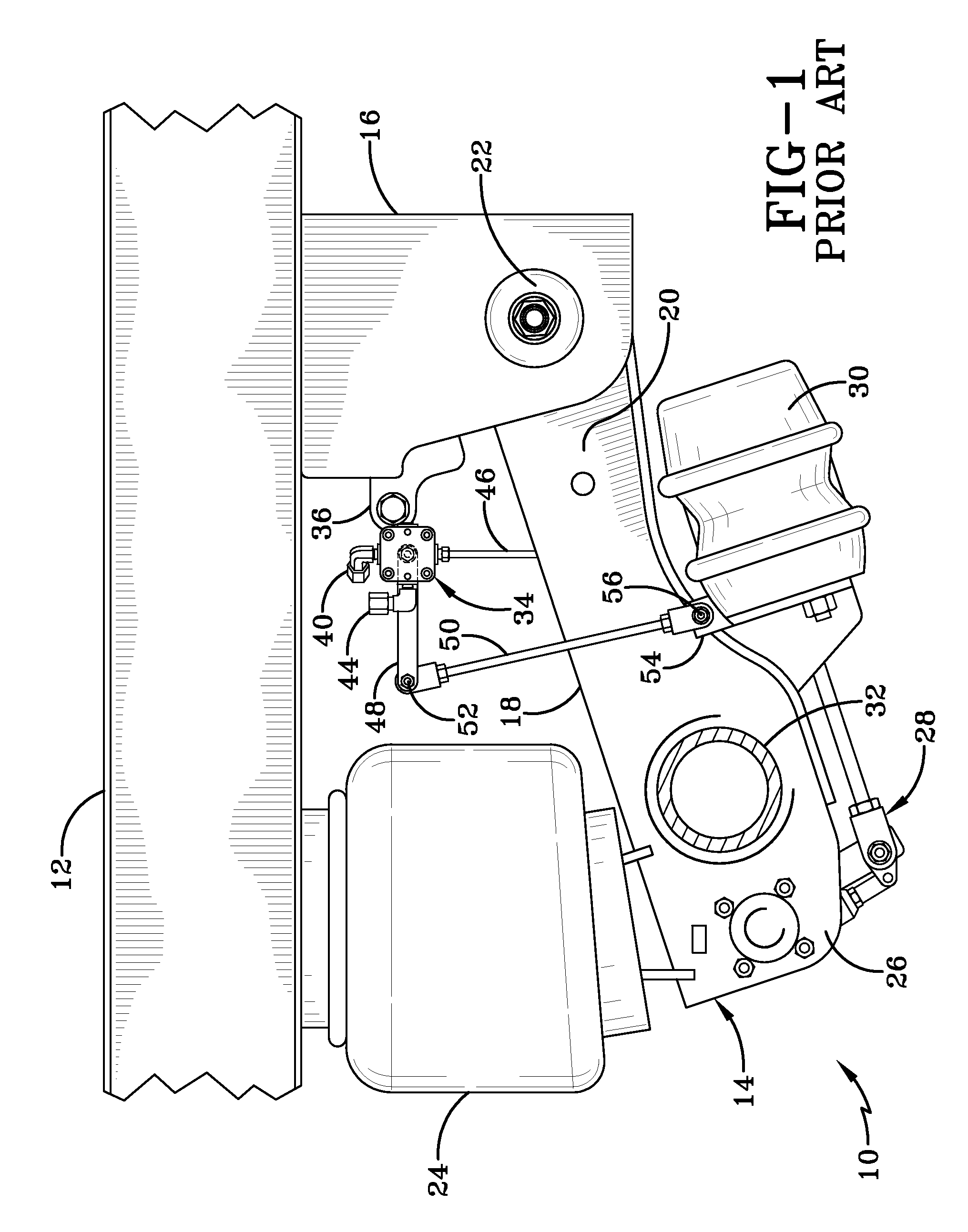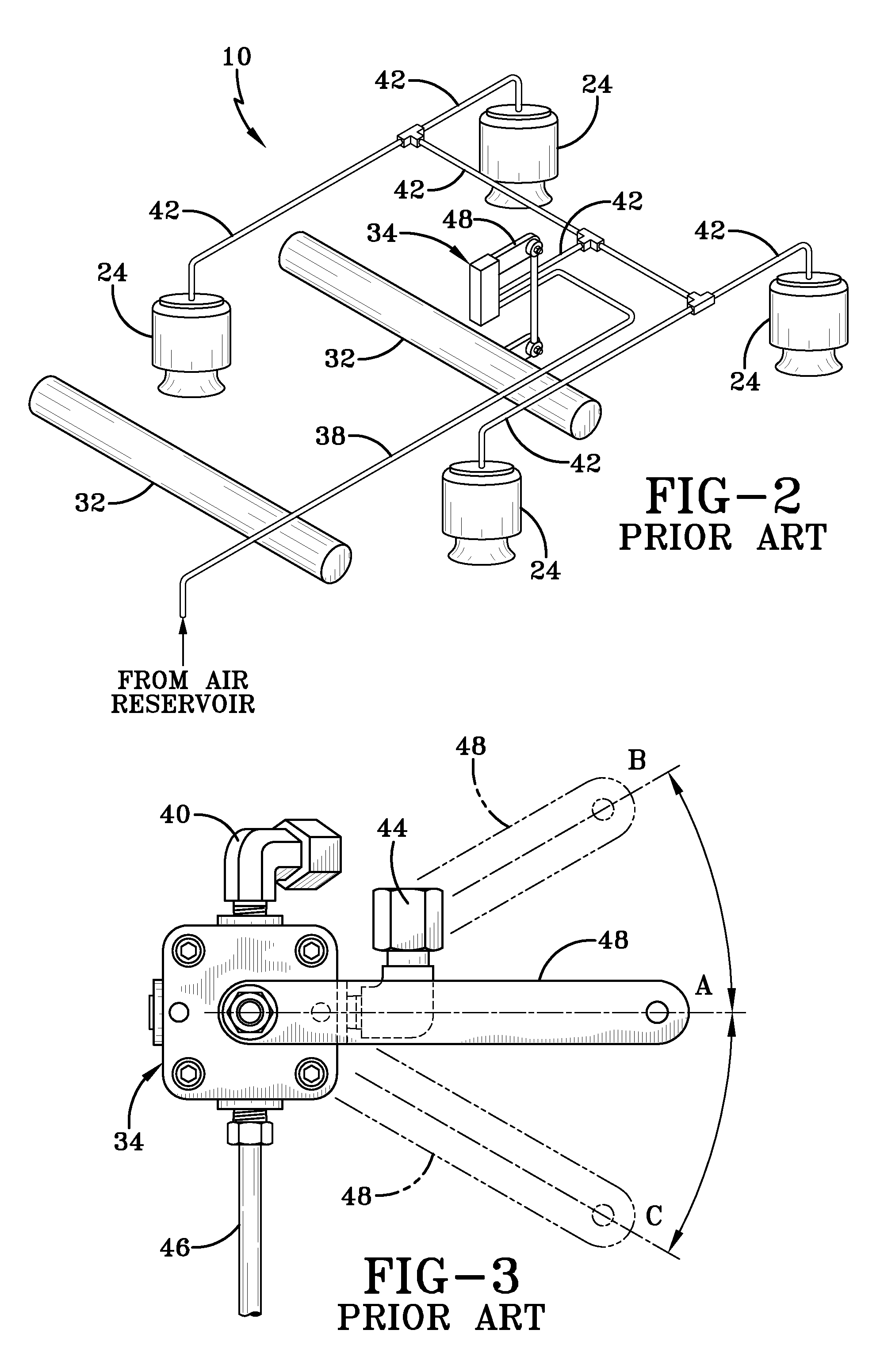Height control valve for vehicle axle/suspension system
a technology of suspension system and axle, which is applied in the direction of process and machine control, instruments, transportation items, etc., can solve the problems of reducing the ability of the compressed air reservoir to rapidly re-inflate the air spring when required, over-exhaustion of air from the air spring, and inability to achieve the effect of enabling the pressure differential,
- Summary
- Abstract
- Description
- Claims
- Application Information
AI Technical Summary
Benefits of technology
Problems solved by technology
Method used
Image
Examples
Embodiment Construction
[0029]So that the structure, operation, and advantages of the improved height control valve for an air spring of an axle / suspension system of a heavy-duty vehicle can be best understood, a prior art height control valve 34 for an air spring is shown in FIG. 1 mounted on an air-ride axle / suspension system, indicated generally at 10, which in turn is mounted on a heavy-duty vehicle frame 12, and now will be described in the environment in which it is utilized. It is important to note that prior art air-ride axle / suspension system 10, while shown as a specific type of trailing arm axle / suspension system, also includes other types of heavy-duty vehicle air-ride suspension assemblies known to those skilled in the art, such as other types of trailing arm and leading arm air-ride suspension assemblies It also is important to note that vehicle frame 12 is generally representative of various types of frames used for heavy-duty vehicles, including primary frames that do not support a subframe...
PUM
 Login to View More
Login to View More Abstract
Description
Claims
Application Information
 Login to View More
Login to View More - R&D
- Intellectual Property
- Life Sciences
- Materials
- Tech Scout
- Unparalleled Data Quality
- Higher Quality Content
- 60% Fewer Hallucinations
Browse by: Latest US Patents, China's latest patents, Technical Efficacy Thesaurus, Application Domain, Technology Topic, Popular Technical Reports.
© 2025 PatSnap. All rights reserved.Legal|Privacy policy|Modern Slavery Act Transparency Statement|Sitemap|About US| Contact US: help@patsnap.com



